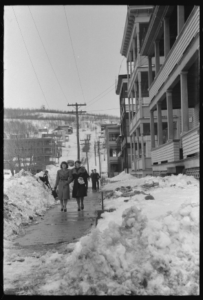In coming weeks, blog posts will address the “human vestiges of the vast continental French empire in North America,” with apologies to the Huguenots. It begins to trace the French-Canadian story as Britain sought to consolidate its hold over its new subjects, and it will carry this drama well past American independence—as far as the twentieth century.
Stay tuned for posts on:
- Encounters with the Patriots of the American Revolutionary War;
- Life in the borderlands of the northeastern United States;
- The transnational story of the Mignault family;
- The beginnings of sustained outmigration from the St. Lawrence River valley in the 1830s and 1840s;
- Canadian participation in the Mexican War;
- The consolidation of Franco-American communities in the second half of the nineteenth century;
- Franco-Americans in the rural regions of New York, Vermont, New Hampshire, and Maine;
- Interethnic conflict in New England;
- Prosper Bender’s role as an intercultural broker in Boston;
- The changing face of the diaspora in the early twentieth century.

For the moment, I invite you to explore some of my published work on the subject:
“A Church of Two Steeples: Catholicism, Labor, and Ethnicity in Industrial New England, 1869-90,” Catholic Historical Review, vol. 102, no. 4 (autumn 2016), 746-770
Drawing evidence from militant ethnic newspapers, historians have long known of conflict between Irish Americans and the French Canadians of New England in the nineteenth century. Alternative sources now bring greater clarity to this multifaceted struggle. Diocesan correspondence and documents from press outlets unassociated with the two communities further emphasize French Canadians’ attempts to resist assimilationist forces but better define the source of such assimilationist sentiments. Whereas the Irish working class aimed to integrate the new Catholic element into a labor movement that it largely controlled, Irish American bishops recognized that the Church’s institutional interests demanded cultural accommodation. Read here.
“Americanization by Catholic Means: French Canadian Nationalism and Transnationalism, 1889-1901,” Journal of the Gilded Age and Progressive Era, vol. 16, no. 3 (July 2017), 284-301
The age of nationalities and nationalism associated with nineteenth-century Europe also found expression in North America in the same period: French Canadians developed a national consciousness charged with a religious and providential mission. As these Canadians crossed into the United States in ever-rising numbers and established permanent “colonies” during the Gilded Age, they carried with them a cultural ideology that kept them apart from mainstream American society—and apart from their Irish American coreligionists and coworkers. Claiming the freedoms promised to them by the Constitution, these immigrants from the North battled for accommodation not only in political conventions or state legislatures, but also in the Roman Catholic Church, whose leaders seemed intent on doing away with foreign languages and customs. The religious battle came to a head as lay and clerical Catholics gathered in Baltimore, in 1889, to reassert the Church’s unity as well as its patriotic credentials. By drawing attention to French Canadian immigration, often overlooked in immigration studies, this article refocuses the question of Americanization on the Catholic Church, which proved one of the most powerful agents of acculturation in late nineteenth-century America. Read here.
Leave a Reply